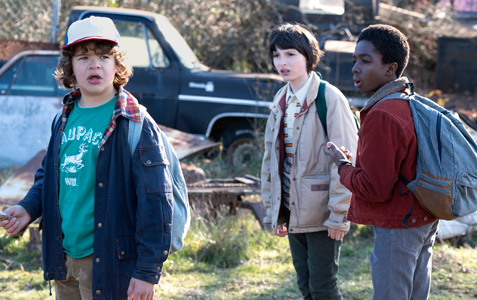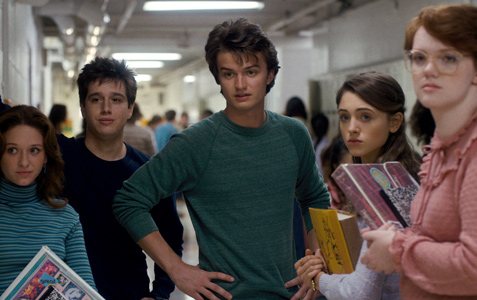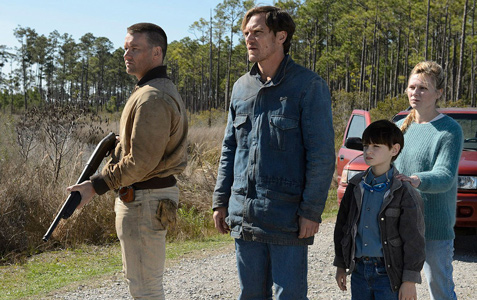Nostalgia Ultra: How two projects have perfectly recaptured the past

Nostalgia is a powerful force. When tapped into correctly, it compels people to gloss over the shortcomings of the era for which they pine. Whether it’s in politics or entertainment, people wish to hearken back to a time when they felt more positive, safe and secure; when joy was easier to come by and things weren’t so complicated. It’s usually associated with childhood because that’s before adulthood brought compromises and shades of gray. Suddenly, decisions had to be made with serious weight but also with implications that could stretch far into the future. This is why politicians always talk about going back to an idyllic past that never existed, and why studios crank out big screen remakes of various properties they hope people still get warm and fuzzy over.
But it’s a hard thing to recapture that feeling, to perfectly evoke those feelings of the past without feeling like a hollow retread. Artists with deft hands have to be able to take those old familiar stings and blend them with something new in a way that is seamless yet exciting. These projects must be comforting but also with a dash of the unexpected; alive in ways that aren’t incongruous with that nostalgia but also not purely a slave to those feelings either. Recently, two such projects have come along that have shown the way to properly revisit the past with an eye to the future. The Duffer brothers’ “Stranger Things” on Netflix and the Jeff Nichols’ film “Midnight Special” both call back to a specific attitude and time in pop culture (and in fact, it’s the same time for both of them), but they manage to do so masterfully enough that it feels both like going back to something familiar while moving forward into unexplored territory.

“Stranger Things” has a wide range of influences to which it pays homage throughout its eight episodes. The Duffer brothers (along with their various writers and directors) are able to doff their caps to these various touchstones in ways subtle and overt, from a whole host of pop culture entities. Stephen King, Steven Spielberg, John Carpenter and a plethora of other icons from the ’70s and ’80s are all incorporated into the story of a missing boy in 1983. And while setting the series as a period piece certainly helps evoke those books/TV shows/films of that era, it’s actually the tone that most closely helps viewers travel back to their cherished memories of those properties.
Part of it is that it deals with children dealing with serious circumstances beyond the help of adults, something that has seemingly gone away in most modern family films. Imperiled children are still present in films today, but they are usually relegated to collateral chips in action and horror films, R-rated fare that want audiences to worry because they are children, not because they are characters with whom we identify (or with whom we once identified). Placing children (both the younger A.V. club/D&D group and the teens hunting the monster) at the forefront of “Stranger Things” not only echoes those films of the ’80s, which routinely put youths in the crosshairs of the adventure and the danger, but also allows the audience to remember how they were at that age (and possibly in that decade, too, if they are old enough). Through the eyes of the children, and their natural responses to what happens around them, the creators are able to tap into that part of our brains that remembers those sensations and those moments from our past.
Which goes to the next point, which is that accurately capturing youth in genre films/TV mainly comes down to two powerful emotions that have seemingly been abandoned in modern cinema: awe and terror. Those are the two key feelings that were used by Stephen King in the books “It,” “Carrie” and “Salem’s Lot.” They are the primary focus of Spielberg (and his cohorts) in making films like “E.T.,” “Poltergeist,” “The Goonies,” “Explorers” and many more that have young characters facing impossible situations.
These impulses are at the forefront because those are the two main feelings, when it’s boiled down, that children experience as they learn about the world. They are awestruck at the amazing possibilities that surround them, the untold worlds of adventure they could soon discover, but they are also frightened of what may come with those discoveries and exploring the unknown. That was what so many of the genre family fare of the ’80s got right (and most were connected to Spielberg in some capacity): these two sides of the same emotional coin forever spinning in the heads of their young protagonists as they embark upon their latest misadventure. By alternately having the kids excited about the possibilities of Eleven’s powers and scared of the darker elements at work in their small town, “Stranger Things” goes a long way to accurately using nostalgia to fuel its tale.

Jeff Nichols’ “Midnight Special” is not a period piece, and uses a lot of modern day fears and visuals in its storytelling, but it still goes back to those same ’80s flicks. Spielberg’s “E.T.” is also an influence here, as is his “Close Encounters of the Third Kind,” Carpenter’s “Starman” and films like “D.A.R.Y.L.” While some have seen the film as a repudiation of comic book films’ hard-on for destruction and mayhem (spoiler warning: that video discusses the film’s ending), I see it as a return to those ’80s films where a child’s own attempt at understanding the world ends up having drastic effects on all who cross his path. Again, it’s the twin emotions of awe and terror at work in Nichols’ tale of a boy with special powers. He can perform terrifying feats that leave destruction in its wake and freaks out the powers that be (very much like “E.T.” and “Starman”), but ultimately, his goal and his purpose is to create, to be a force for good and for change, and to inspire wonder and not fear in others.
In “Midnight Special,” Alton Meyer is just a boy, albeit a very special one, who is at a crossroads between the terrible and the terrific. No one understands him or his abilities, and many people seek to control or destroy him for it. This feeling of grasping the extraordinary while others don’t understand has always been a powerful metaphor in titles pitched at the young (see “X-Men” comics, “Harry Potter” books or any of those ’80s titles mentioned above). By returning to those core feelings, Nichols is able to resurrect those feelings that used to come along with Amblin Entertainment films, that sense of a wondrous journey that can occasionally veer into dark territory. But the only reason it works, and the reason the nostalgia is strong and transports audiences back to the cinemas and video stores of the ’80s, is because Nichols has such control over those warring emotions that fuel so much of childhood discovery and the terrible but wonderful act of growing up.
Other films have tried to capitalize on nostalgia before, most notably with J.J. Abrams’ love-letter to ’80s Spielberg in “Super 8.” That film has many flaws, mostly due to poor writing, confused motivations and awkward tonal shifts, but it got very close to recapturing the past by trying to focus on the two hallmarks of youth. “Midnight Special” and “Stranger Things” succeed where “Super 8” failed by masterfully handling tone throughout, even when juggling various characters of different ages and perspectives. What Jeff Nichols and the Duffer brothers have done with their projects is to revisit and revitalize the past, putting enough modern spins on familiar tropes and feelings that it feels new and not just a checklist of nostalgic influences. Whenever someone goes to make a nostalgia trip of a film or TV series, they should always ask themselves what were the emotions that were actually being captured on film and evoked in audiences? Only once filmmakers and writers get a handle on those emotional truths are they able to bring audiences back to a different but familiar time, and only then will viewers properly fall under their spell.
Related Posts
Comments Off on Nostalgia Ultra: How two projects have perfectly recaptured the past
Posted in: Entertainment, Movies, Television
Tags: Duffer brothers, Jeff Nichols, Midnight Special, Steven Spielberg, Stranger Things








